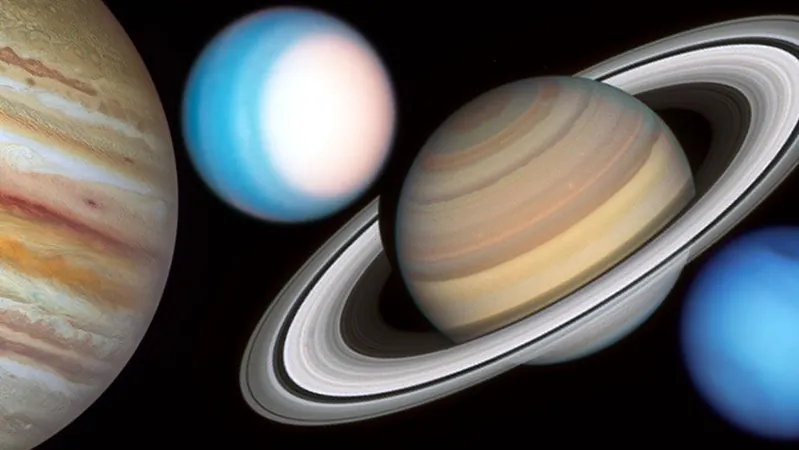
Celebrating a Decade of Discoveries: Hubble Space Telescope's Remarkable OPAL Journey into the Giants of Our Solar System
2025-01-08
Author: Mei
Introduction
The Hubble Space Telescope, an iconic marvel of modern science, has been a beacon of astronomical discovery for over 34 years. Among its many missions, one of the most significant is the Outer Planet Atmosphere Legacy (OPAL) project, which has been observing the majestic gas giants of our solar system—Jupiter, Saturn, Uranus, and Neptune—since its launch.
The OPAL Initiative
As part of this ambitious OPAL initiative, Hubble conducts annual observations of these distant worlds to unveil the mysteries of their atmospheric dynamics and evolution from 2014 to 2024. The stunning images captured over the last decade illustrate the changing atmospheres and seasonal variations of these planets, revealing insights into their complex meteorological patterns.
Comparative Studies of Gas Giants
By closely monitoring the gas giants when they are nearest to Earth in their orbits, scientists are able to compare data year after year. This ongoing study not only enhances our understanding of the weather systems on these outer planets but also provides valuable context for the study of exoplanets in distant solar systems. The unique atmospheric conditions of these gaseous titans, influenced by their vast distances from the sun and different rotational axes, help astronomers draw parallels with other celestial bodies beyond our own system.
Hubble's Orbit and Functionality
The Hubble Space Telescope orbits Earth at an altitude of approximately 340 miles (547 kilometers), operating with a remarkable inclination of 28.5 degrees to the equator. Traveling at a staggering speed of about 17,000 mph (27,300 kph), Hubble completes an orbit around the Earth every 95 minutes, providing an uninterrupted view of the universe.
Importance of Space-Based Observations
Earth's atmosphere often distorts and blocks certain wavelengths of light, especially ultraviolet rays, which makes space-based observations critical for astronomical research. Hubble's ability to capture ultraviolet light—a spectral region of immense significance—sets it apart from ground-based telescopes and ensures that its discoveries remain unrivaled in the near future.
Technological Advancements
The telescope is equipped with a variety of sophisticated instruments that enhance its observational capabilities, including the Wide Field Camera 3 (WFC3), Cosmic Origins Spectrograph (COS), Advanced Camera for Surveys (ACS), and others. Designed for upgrades and repairs, Hubble was serviced by astronauts from 1993 until 2009, which allowed for enhancements that have kept its scientific output at the forefront of discovery.
Conclusion
As the OPAL mission continues, the data collected not only enriches our knowledge of our solar system but also fuels the quest to understand the myriad worlds that lie beyond. With each observation, the legacy of Hubble grows, inviting new questions about our universe and the very nature of planetary atmospheres. Stay tuned for the next thrilling updates from Hubble as it peels back the layers of cosmic mystery surrounding our solar giants!

 Brasil (PT)
Brasil (PT)
 Canada (EN)
Canada (EN)
 Chile (ES)
Chile (ES)
 Česko (CS)
Česko (CS)
 대한민국 (KO)
대한민국 (KO)
 España (ES)
España (ES)
 France (FR)
France (FR)
 Hong Kong (EN)
Hong Kong (EN)
 Italia (IT)
Italia (IT)
 日本 (JA)
日本 (JA)
 Magyarország (HU)
Magyarország (HU)
 Norge (NO)
Norge (NO)
 Polska (PL)
Polska (PL)
 Schweiz (DE)
Schweiz (DE)
 Singapore (EN)
Singapore (EN)
 Sverige (SV)
Sverige (SV)
 Suomi (FI)
Suomi (FI)
 Türkiye (TR)
Türkiye (TR)
 الإمارات العربية المتحدة (AR)
الإمارات العربية المتحدة (AR)